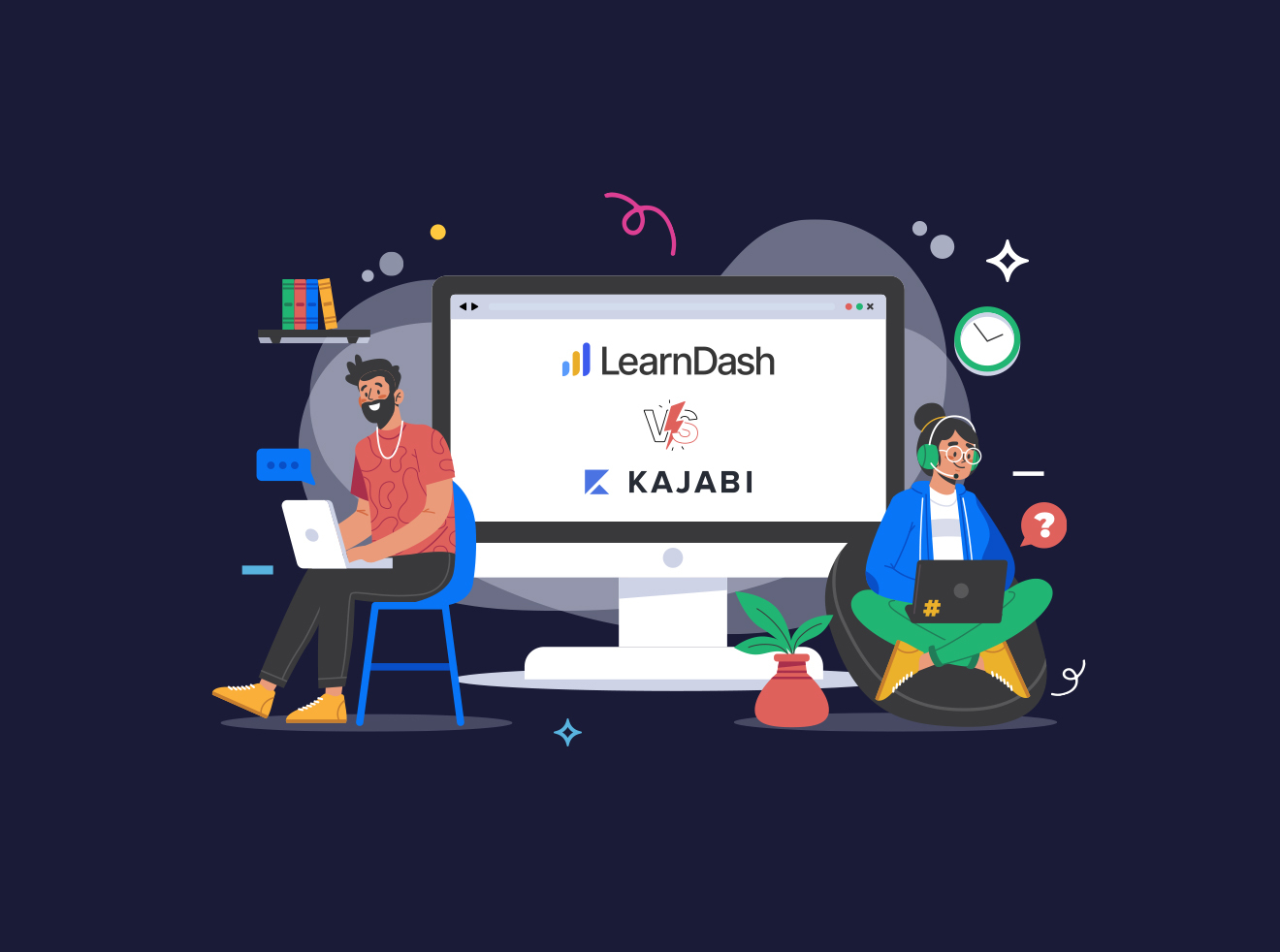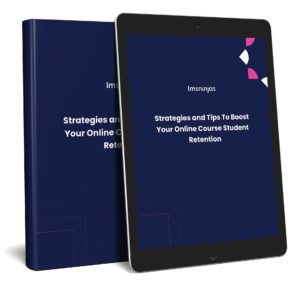Cutting-edge technology is all around us, thanks to artificial intelligence. Virtually all high-priority industries and fields rely on artificial intelligence to perform crucial tasks. AI propels the education sector to maximize profits for teachers and kids.
Consumers have higher expectations for individualized content and superior navigation than ever before. As a result, web design and development firms can no longer rely on tried-and-true practices but must constantly adapt. This is precisely where AI comes in, changing all the conventional methods by placing a greater emphasis on User Experience.
Global Market Insights predicts that by 2024, the market for artificial intelligence (AI) in schools will be worth more than $6 billion.
Artificial Intelligence and E-Learning
With the help of artificial intelligence, e-learning platforms can simulate human intelligence and carry out various complex activities. Speech recognition, decision-making, translation, and many other human-related tasks can all be solved by this technology.
From preschool through university and even business training, AI will play a part and have an impact. The opportunity to develop adaptive learning features using user-specific resources will significantly enhance the educational process for students.
In what ways will automation, especially artificial intelligence, influence the education industry, even though it appears doubtful that robots will soon replace instructors at the forefront of the classroom?
Ways Artificial Intelligence Is Transforming E-Learning
Technologies based on AI are revolutionizing how people live, work, shop, study and discover new knowledge. It also affects the resources available to learning & development experts and the methods used to develop and distribute eLearning materials. Examples of the significant impact of AI on e-learning include the following:
Personalization of e-learning
Without AI, you can’t cater to the individual tastes and learning styles of all your students in terms of material and its presentation. Giving students a say in how they advance through their coursework is a key component of personalized learning.
The technology will essentially take the reins to steer the overall efficiency of a student’s learning journey, bringing personalization to an entirely new level. Thanks to the predictive power of machine learning algorithms, you can tailor your lessons to each learner based on their previous achievements and personal objectives.
By way of illustration, when online students admit to a specific knowledge deficit, they are given individualized advice on how to fill that gap in their education. In other cases, the system may determine that the student does not need to go through as many of the introductory lessons on a topic, allowing them to move on to more advanced material.
Suppose you want to take learning experiences to a higher level with AI. In that case, you’ll need to increase the quantity and quality of your educational content, particularly in making adaptive learning opportunities and creating personalized content based on the needs of individual students.
With the help of machine learning algorithms, you can tailor the content you present to each learner based on their prior achievements and aspirations, thereby increasing their investment in the learning process. If a learner on a digital platform admits to having a certain knowledge gap, they will receive customized recommendations designed to fill the void in their information.
Using AI and data modeling, your online learning system can monitor and forecast each learner’s actions, allowing you to save money without sacrificing effectiveness. Another benefit is the ability to deploy digital educational materials whenever and wherever needed.
Enhanced gamification features
Integrating gamification features driven by artificial intelligence into your learning management system will keep your students interested and engaged in their studies.
Gamification can incentivize students to complete their coursework by allowing them to earn badges and progress through a series of levels. In contrast, AI can be used to deploy gamification in a customized manner and develop courses pertinent to the educational program or the training needs of the industry.
Put another way — the application of game theory to enhance artificial intelligence. Artificial intelligence, however, may also be utilized to discover and create the most effective gamification methods for each given endeavor. Input data could be analyzed, and the findings used to inform the development of additional gamification variables.
An increasingly popular trend in LMSs, gamification is now a more potent weapon than ever, thanks to the incorporation of artificial intelligence. Implementing the gamification application renders the adaptation process more interesting and accessible to students.
A seamless and efficient onboarding process to e-learning programs
Since it falls under the umbrella of AI, conversational AI has become an integral part of the cutting-edge instructional approach that aims to revolutionize the entire field of education.
Genuine conversation between humans and machines is essential for effective e-learning onboarding; conversational AI helps make that a reality. Conversational AI can understand students’ needs and provide more accurate, human-like responses thanks to natural language analysis.
Virtual support and chatbots are prominent examples of conversational AI, and both can be helpful throughout the onboarding process.
Chatbots enabled by artificial intelligence can engage in natural-sounding conversations with users across websites, mobile apps, and collaborative tools. Educational institutions will quickly crumble without technological support in our ever-evolving digital world.
Embracing conversational AI in academic institutions means adopting the tool to keep students interested and streamline the learning process more efficiently at any time, anywhere.
Students now have instantaneous access to help thanks to conversational AI technology.
A chatbot powered by AI may inform students about the application process and provide them with information on their classes, modules, instructors, due dates, events, and more. It provides instantaneous information about rooms, facilities, the library membership procedure, and financial aid opportunities.
Data monitoring
Data collection and analysis from each user interaction is a major strength of AI systems. In doing so, the learner’s educational trajectories can be more precisely defined.
Data Analytics in e-Learning aims to improve training effectiveness by analyzing collected data. Predictive analysis, machine learning, and multi-source knowledge mapping are just a few of the powerful technologies that may be used to tailor a system to each learner’s specific requirements in the field of Learning Analytics.
Incorporating analytics into online education allows for a more thorough and detailed assessment of students’ progress.
Learner engagement with training materials, learning activities, and peers are revealed through data analytics. Teachers can better meet the requirements of their students if they have data about their interactions with others. Data monitoring helps educators enhance the value of their programs by tracking student progress and allowing for comparisons across teaching approaches.
The disadvantage of online education is that there is a vast library of resources (books, articles, videos, audio recordings, photos, etc.) that students cannot easily access. Educators and leaders sometimes struggle to make sense of the information because so much is unorganized. Artificial intelligence can quickly and accurately scan and analyze enormous data sets, allowing instructors and students to gain more value from the content.
Thus, the deployed technology may recognize patterns and trends; gather understanding about the learner’s unique learning style, gaps, and pace; and then highlight this information for the user to evaluate and act upon.
Enhanced private tutoring
Personal studies are always evolving to address the disparities that exist between each group of students. Students having trouble keeping up with the coursework would benefit greatly from private tutoring and extracurricular support outside the classroom.
Teachers can save a lot of time using AI tutors since they eliminate the need for students to spend extra time explaining complex concepts. AI chatbots or virtual personal assistants allow students to ask for clarification without raising their hands in front of their classmates.
AI chatbots and coaches, as well as other tutoring programs, can handle individualized instruction thanks to their ability to process feedback and instructions. However, they cannot replace educators because they lack the sophistication required to educate in the same way humans do. If an instructor isn’t available, but a course’s lessons and exams can be done digitally, these are great resources.
E-learning systems can use AI to effectively instruct students in various disciplines, including but not limited to geography, programming, languages, circuits, chemistry, medical diagnostics, physics, genetics, and mathematics. They can evaluate factors like student participation, performance, and understanding with the right tools. Without the constraints of a traditional classroom setting, students can use AI technologies to practice and perfect their skills.
Improved navigation on online learning platforms
You probably won’t give much thought to AI LMS, even if it’s a breakthrough that could significantly improve your working life. This technology has many noteworthy benefits.
For example, online content distribution can be expedited, and the focus can shift to the student. There is more leeway in implementing the virtual learning methodology, and so on.
Today’s e-learning platforms can expand into uncharted territory by incorporating these features of the modern online learning process. As a result, many schools are adopting AI LMS to handle their students’ online education effectively.
Artificial intelligence is being increasingly applied to e-learning, with chatbots playing a key role in this trend because of their ability to make content more accessible and engaging for learners of all backgrounds. For instance, a chatbot can help users rapidly access the information they need within an LMS by answering their questions.
The online chat support is optimized to respond quickly to any student’s question. Assignment submissions, email responses, text messaging, and feedback can all be automated for students.
Students who struggle academically can now find more effective communication methods thanks to cutting-edge artificial intelligence technologies. Artificial intelligence improves educational opportunities for students with disabilities, such as the deaf, the visually impaired, those with autism spectrum disorder (ASD), and so on.
There is no subset of pupils with exceptional needs that can’t benefit from training in AI technologies.
Increased opportunities for proactive learning and reliable feedback
Due to a lack of continuous feedback, students with difficulty learning typically struggle to provide it. In a large cohort, it can be hard to give individual attention to each of the few pupils who need it. As AI develops, teachers can provide pupils with immediate responses to their work. The system lets students take as much time as they need to learn each topic, and it doesn’t progress to the next one unless the student has shown that they’ve mastered the previous one.
Having a lot of pupils in the class can make it difficult for a teacher to go at a slower pace to accommodate those who learn more slowly or have learning difficulties.
Thanks to AI’s ability to assist students in providing and receiving trustworthy feedback, teachers will be better equipped to create lessons accessible to students of varying cognitive abilities. Using AI in the classroom gives students more flexibility in how quickly or slowly they absorb new information.
Simplified grading
AI is also assisting in automating administrative procedures, freeing educators from these tedious responsibilities. Educators have had to handle a variety of extra responsibilities for a long time beyond just teaching and running a classroom. Teachers have several responsibilities outside of the classroom, including but not limited to designing and analyzing homework, grading tests, and essays, organizing learning resources, and making periodic progress reports.
According to a recent poll, classroom instruction accounts for 43% of instructors’ time, with the remaining 13% split between preparing assessments, lesson planning, and paperwork management. Consequently, this suggests that educators devote more time to activities other than instruction. All of these responsibilities can be simplified with the use of artificial intelligence.
A computer program that uses artificial intelligence to grade papers can grade student assignments and essays in minutes.
The AI software integrates the best of both human and machine intelligence. Teachers’ and professors’ grading rubrics serve as the data source for the AI grading program. This data on manual grading is saved in the system so the software can refine its grading criteria.
Artificial intelligence programs can acquire new skills by analyzing existing data. The feedback from the graded papers might serve as a springboard for further education. The software is trained to do the same grading tasks as humans. Graders can now allocate grades to papers using machine learning and AI.
The use of artificial intelligence in education can be combined with plagiarism detection techniques to help students find instances of similarity between their own work and that of other students, both in the past and in the present. It also can contrast writing samples to see whether another person may have finished a student’s assignment for them.
Improved course quality
The standard of e-learning is being raised in numerous ways by AI.
Artificial intelligence is a crucial tool for creating unique educational opportunities. It is common practice in schools to present all students with the same material. It’s hardly surprising, given how difficult it might be for an instructor to cater to their students’ requirements through individualized course materials.
On the other hand, a more efficient framework would consider differences in skill levels. Yes, and that is where AI comes in handy. Artificial intelligence can monitor student progress and provide feedback to teachers so they can tailor lessons to each student’s needs.
In e-learning, both online and in-person instruction is used. Nonetheless, you can never tell when a pupil will require assistance.
An instructor might need to be on call 24/7 (which is unlikely). However, if educators use an AI assistant within an e-learning course, they can provide instantaneous responses around the clock.
Artificial intelligence assistants are becoming increasingly lifelike due to advances in natural language processing and machine learning, which allow them to read and understand written or spoken text and respond appropriately. By doing this, they can offer direction, respond to inquiries, and address issues as they arise.
And now that we live in the age of e-learning, AI can even assist students in polishing their papers before turning them in.
Artificially intelligent helpers can think of new ideas, track for useful information, and improve the quality of their wording. Articles, blog posts, and academic essays are not immune to the fact that any information may be enhanced using numerous software and online tools.
Since the invention of machine translation, linguistic barriers to education have largely been removed. Perhaps the most well-known application of artificial intelligence is machine translation, which uses high-powered engines developed by companies like Google, Amazon, and Microsoft to convert documents written in a foreign language into another target language.
Natural language processing coupled with voice recognition, which encodes spoken words into binary, is another prominent method. Using this method, students can interact with AI assistants by talking to them in their own tongue.
Supports differently-abled learners
The demands and habits of the “regular user” usually drive AI-based development and design, and from a user experience standpoint, persons with disabilities are often outside the norm. Automatic speech recognition systems, for instance, are often designed for average speech patterns rather than the speech pattern of individuals with speech impairments.
The use of AI-based solutions can also aid in interactions with the visually impaired. Amazon’s Echo, Apple’s Siri, and Google’s Home offer voice-activated conversational interfaces for interacting with media. But there is a lot of room for development in AI’s capabilities. AI could be a great resource for kids who find the visual stimulation of the internet too much. To better understand the page’s organization, navigation, and potential omissions, students might have the virtual assistant read the content aloud.
Incorporating this form of accessibility into the universal system such that it is automatically included with every device may help lessen the social stigma (and, maybe, the financial expense) of needing to acquire supplemental accessibility tools or programs.
The goal of incorporating AI into the classroom was not to displace educators or other professionals; rather, it was to transform the educational experience for the better. E-learning has helped streamline the educational process and reduce the workload for instructors and students.
Potential Negative Impacts Of Artificial Intelligence On eLearning
AI has existed for a long time and therefore is starting to show up in more and more areas of our lives. AI has several potential uses in the classroom, including gamifying lessons to increase student interest and automating essay judging with algorithms for machine learning to reduce human error.
Before rushing into the use of these technologies, it’s important to weigh certain potential drawbacks. The uploading of confidential material into cloud-based repositories that may not have proper security safeguards is a serious privacy risk that can be exacerbated by using artificial intelligence tools.
Another educational worry about this technology’s broad use is that kids who don’t take the time to learn about how machines work may be severely disadvantaged in the future if their chosen profession requires extensive computer science knowledge.
Addiction to AI
An addiction to AI is possible. One possible drawback of implementing AI in the classroom is that students can become less interested in learning in favor of playing with their AI-powered gadgets.
Many are worried about the long-term effects of more sophisticated AI. Using AI in the classroom has many drawbacks that must be considered. The primary issue is that it prevents kids from developing critical thinking skills and encourages them to rely on external sources like the internet and mobile devices rather than gaining these abilities on their own.
This is an unsettling scenario for everyone involved, from teachers who want to defend their jobs to parents whose kids need education for healthy growth.
Students learning behaviors suffer when technology is substituted for human interaction and when learners become overly reliant on systems rather than attempting problems themselves. Because they would start turning to the system for solutions to even the smallest problems, they risk losing the ability to think creatively and eventually becoming hooked on technology.
Bias denying learners equitable learning opportunities
AI algorithms can be influenced by the prejudices of their creators, which can lead to imbalanced educational opportunities for learners from underprivileged backgrounds. As a result, AI needs careful testing and monitoring to remove any bias from the data it processes. This will ensure that all students have the same educational possibilities.
In addition, if not applied correctly, artificial intelligence can worsen existing inequalities in the classroom. Using AI in the classroom raises the risk that students from disadvantaged backgrounds will receive insufficient or improper assistance, worsening their academic performance and extending the achievement gap.
Teachers are responsible for guaranteeing that all pupils have equal access to high-quality AI-enabled curriculum.
Communication barrier
There are various drawbacks to using AI in education. Still, perhaps the most significant is that if robots were utilized as substitutes for human teachers during class time, there would be a huge communication gap between students and teachers.
A breakthrough in teaching may be possible with AI, but there is still a significant language barrier between machines and people. There are still some kinks to work out before artificial intelligence can be widely adopted as a tool for education.
One of these issues becomes much more noticeable when interacting with AI than humans: language barriers often arise because machines cannot understand us for what we really are. This is in contrast to a human, who could respond with actions or words that provide contextual clues about their motives without the other person having to explain themselves.
Lack of human interaction can weigh down the quality of learning
Even though AI-enabled technologies can aid in providing individualized education, they can never replace the crucial human element to the learning process. Teachers should do their best to meet the needs of their pupils while also maximizing the benefits that technology can bring to the classroom.
The quality of students’ learning and the connection between educators and learners may suffer if teachers are replaced by robots and do not actively participate in their classes. While the human instructor can provide several viable options for problem-solving, the machine needs only provide one.
The cost of AI maintenance and repair is high
There are some drawbacks to using AI in the classroom, most of which involve upkeep.
As an example of a drawback, AI’s restricted knowledge base may have unanticipated repercussions if it is allowed to go beyond its capabilities; thus, AI should always be overseen by a human expert.
Also, similar to how various machines may not work well with each other if their languages don’t mesh, an absence of coordination between two systems may render them inoperable at the most inopportune times if the machines don’t speak the same language.
Implementing cutting-edge technology like facial recognition and natural language processing software into underfunded educational systems would be an uphill battle. This is because of the high cost of the necessary software and hardware.
The Future of Artificial Intelligence eLearning
The role of AI in the modern world is crucial. A comparison of AI’s future and present effects on education is essential. The strengths of AI in education can be improved with the help of a thorough investigation of the influence of AI on past and future educational experiences.
Companies specializing in AI will offer solutions to pressing issues. For an AI startup, it can be challenging to provide products and services in the education market that call for a shift in how classes are typically taught.
Therefore, Artificial Intelligence eLearning is most likely to deliver rudimentary remedies to related problems without defined ambitions and goals that situate emerging technology potential within the larger context of the change of learning and the future of education.
As a result, AI has the potential to mechanize and recreate ineffective teaching methods, making it more challenging to alter them. Thus, creating appropriate visions and principles may be necessary while creating future-proof models for education and training. Developing realistic experiments in collaboration with educators and training professionals is essential.
Now that AI is at the forefront of the political agenda, it would be foolish to create pie-in-the-sky scenarios in which AI drives the next technological revolution.
The term “new electricity” has been adopted to describe AI. Therefore, it is crucial that educators, who often struggle with the concrete requirements of day-to-day coaching exercises and new initiatives, are not caught off guard by this new technology.
Artificial Intelligence eLearning
Most AI applications in the classroom have focused on providing students with more knowledge. Developing an intelligent teaching system has stood out as the primary research focus. The informational hierarchy is the focus of this system.
Online learning settings have played a significant role in delivering learning research data because student performance and adaptation can be watched and recorded in detail within its information technology ecosystem. As a result of the challenges inherent in creating an ITS for a wide variety of subject areas, researchers have been forced to narrow their focus on more specific issues, such as the application of artificial intelligence and machine learning to the creation of instructor interfaces again for monitoring of student’s progress and the assessment of their learning.
Need help implementing AI into your LMS? Contact our LMS experts!




